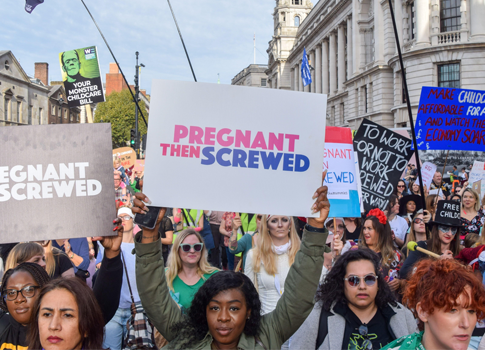Holiday takers and rule breakers
With headlines reporting huge pent-up demand for holidays, combined with growing fatigue at regulations, the Government will face a challenge in maintaining restrictions over the summer. The problem is not universal however, with 37% of Brits saying they will not travel abroad or domestically, increasing to 45% for over 65s.
Furthermore, 20% of Britons will not go on holiday until they have received the vaccine, rising to nearly 50% of Britons over the age of 55. Though not exclusively so, it is younger audiences who seem more determined to travel aboard.
It is also amongst younger audiences that we see a higher number of Fixed Penalty Notices (FPNs) issued for breaches in Covid-restrictions, with data from the National Police Chiefs Council (NPCC) showing over 7 in 10 were issued to the under 35s.
Often presented as near universal, the challenge the government faces to maintain behavioural restrictions while opening up society seems to be more acute amongst younger audiences, who appear both willing to be more mobile and more likely to break the rules. This is not a case of condemning younger people, but focusing communications where it is needed the most.
This presents a further challenge, as messaging targeted to one audience group risks inciting resentment from those who feel they are following the rules but still being targeted.
This is exemplified by a recent study by the University of Portsmouth which found that people think that “they” are sticking to Covid-restrictions, but that the “general public” is nearly twice as likely to be breaking them.
Interestingly, “they” may be right – but for the wrong reasons.
In what is referred to as the Paradox of Knowing, we are often better at predicting other people’s future behaviour than our own. So, in accurately forecasting that the masses are breaking the rules, this may also reflect our own actions.
Cash under the mattress
At the start of March, the Treasury confirmed that the limit on a single payment using contactless card technology will rise to £100 later this year .
The sharp reduction in the use of cash over the pandemic is largely the acceleration of a long-term trend towards digital payment options, caused by a combination of store closures, restrictions on movement, the increased ease of digital payments and a number of stores refusing to accept cash.
The numbers are impressive – 79% of Britons say they have used less cash and 32% have not used cash in more than a month.
However, this is not the complete picture as the bank of England, rather surprisingly, reported an increase in demand for bank notes – a seeming increase in demand for banknotes in spite of a reduction in the transactional use of cash (I know, another bloody paradox!).
Now, a paradox at any time is enough to send most into a tailspin, but a closer look at the behaviours behind these seemingly contradictory positions brings some relief.
Much like loo-roll, it appears Brits are hoarding our cash, at a number of levels, giving the impression that demand for banknotes is higher because less cash is in circulation.
Individuals are holding onto money for emergencies and businesses are because they have been unable to go to their branches and cash payments for services (gardening, cleaning etc) are going unbanked.
In further signs that we are not yet ready to abandon cash, many Britons are against increased contactless limits (42%) and continue to use cash on a high percentage of occasions for everyday purchases (see chart below).

The combination of these behaviours demonstrates both the considerable resilience of cash, in some parts of society, and the large number of people who have concerns over the security of cashless payments.
Cash may be on the way out, and sooner than some thought, but the final leap into a truly cashless society will need to see central banks overcome issues of trust, privacy and security, amongst a range of behaviours, that may yet see cash put up a considerable fight to exist.
When will electric car sales take off?
Finally, with Sky news reporting that sales of electric cars are not growing fast enough to meet the Government’s climate targets, the challenge for car brands is to stand out, as “the electric car brand of choice” amongst their target audience.
The rapid acceleration of electric car production will cause a huge change in car ownership in the coming years – it’s just taking longer than the Government would like.
However, that means that the fast pace of change amongst car manufacturers will see supply outstrip demand – “the overall industry capacity forecast for 2030 is approximately 14 million units above our projections for consumer demand” (Deloitte Battery Electric Vehicles report 2020) – creating a glut of options for would-be-customers.
With fierce competition on the horizon, brands will need to think carefully about what segment of the electric car market they are going to appeal to – premium, affordable, high performance – and focus on standing out to this group, rather than generically pushing the case for electric vehicles.
The article was written by our MD Tom Laranjo and was originally published in Mediatel on 22/03/2021.






